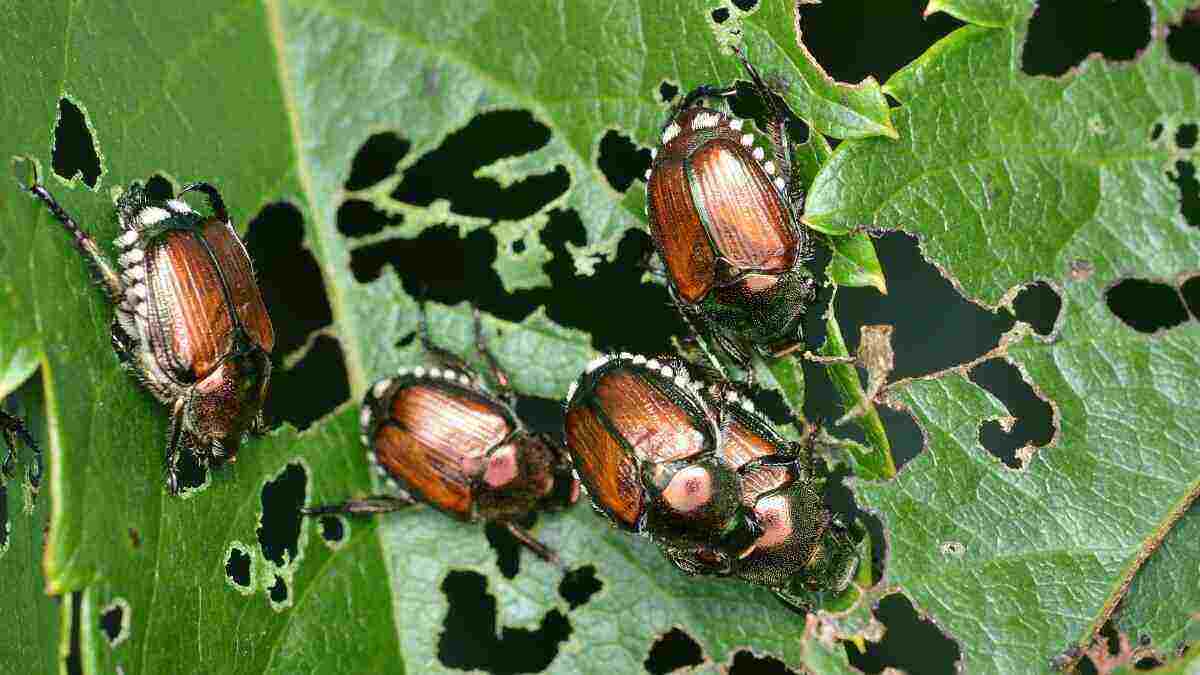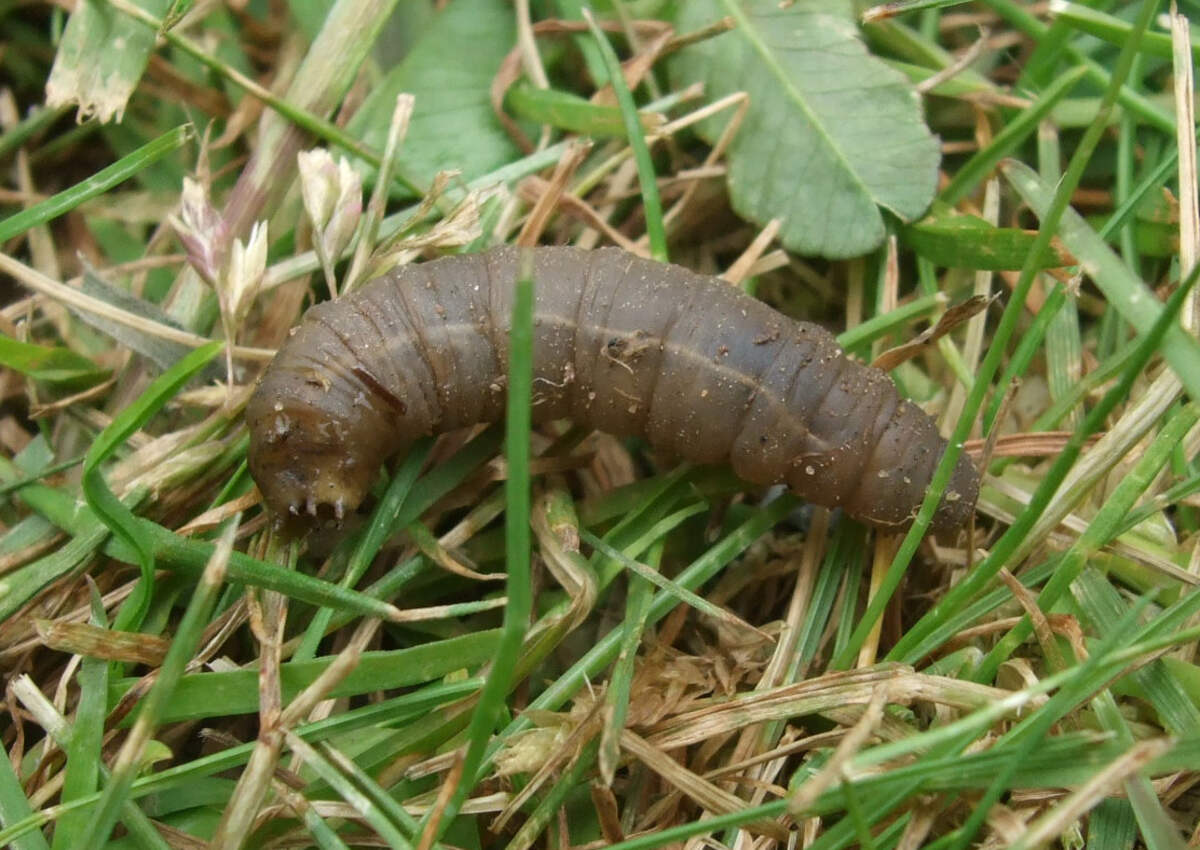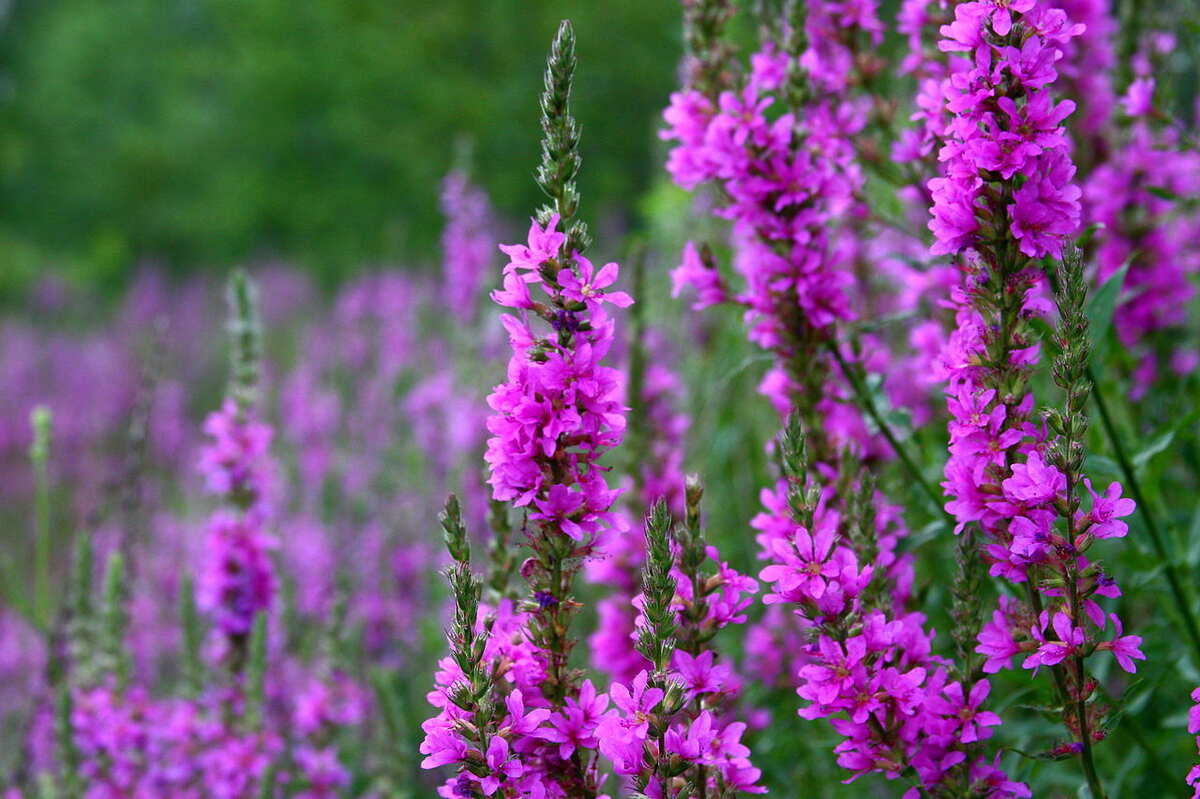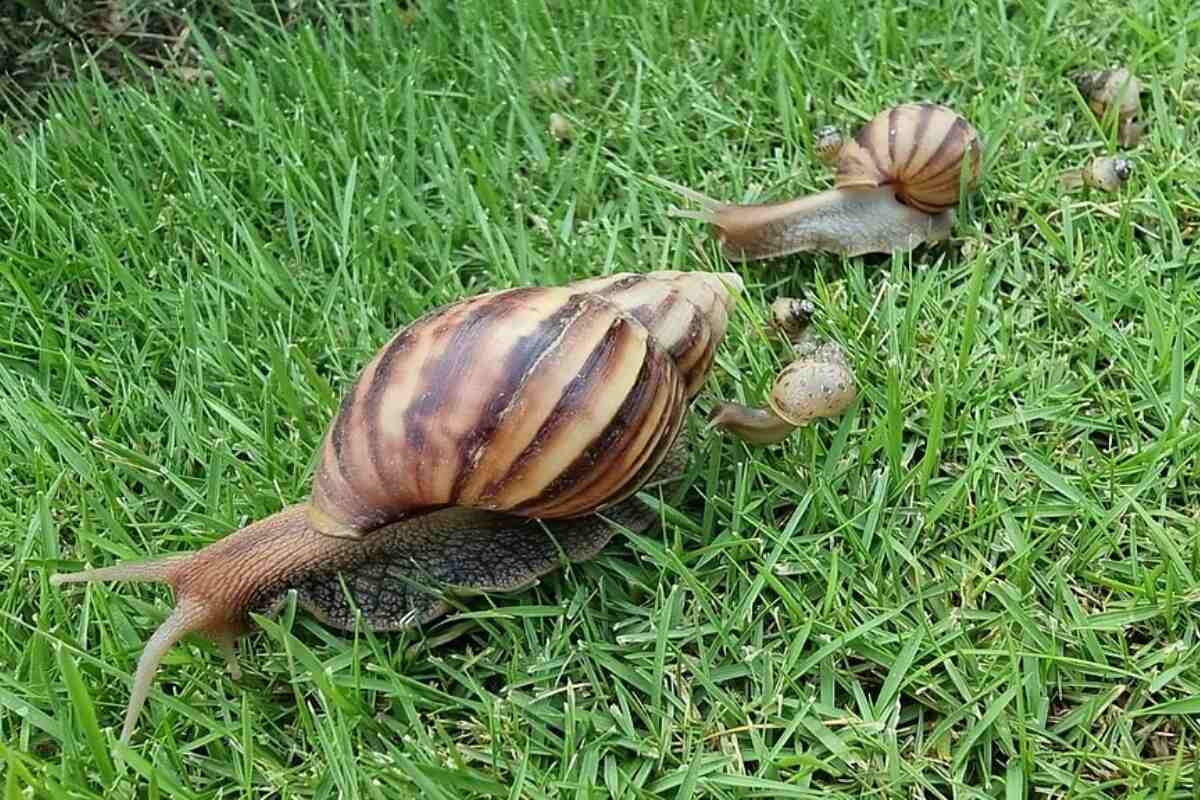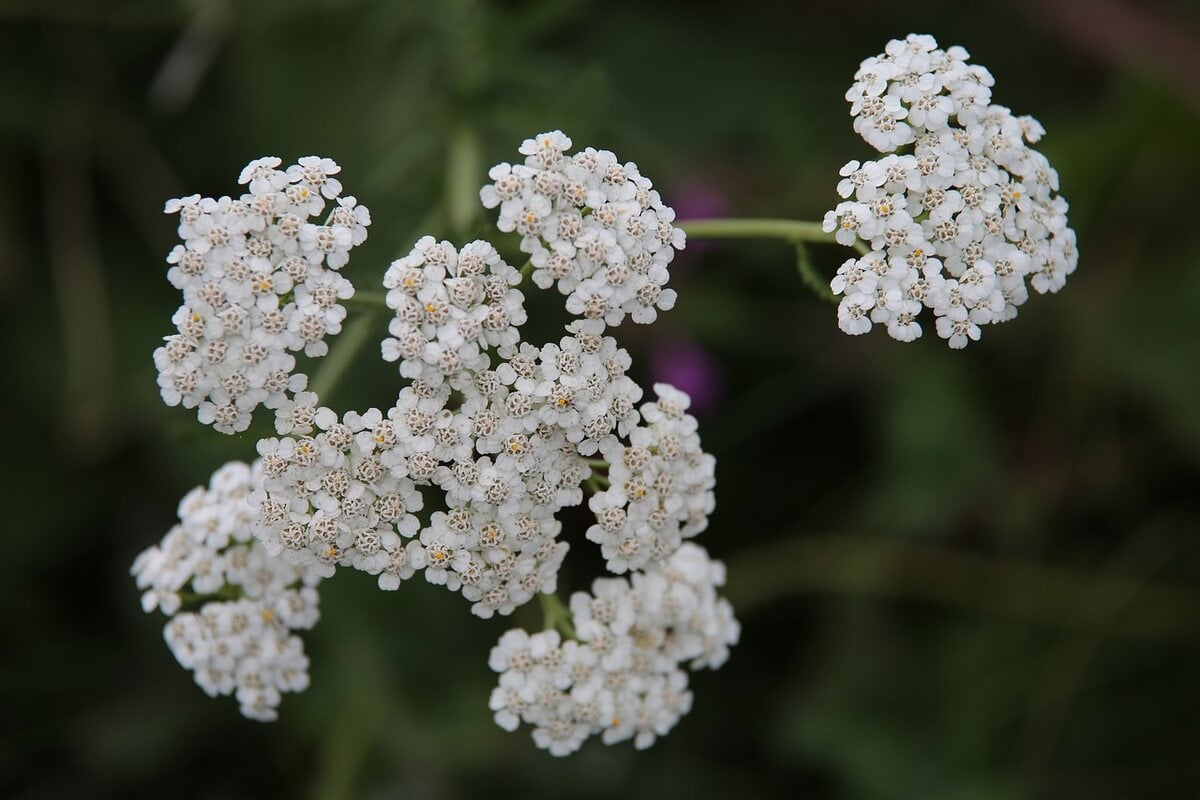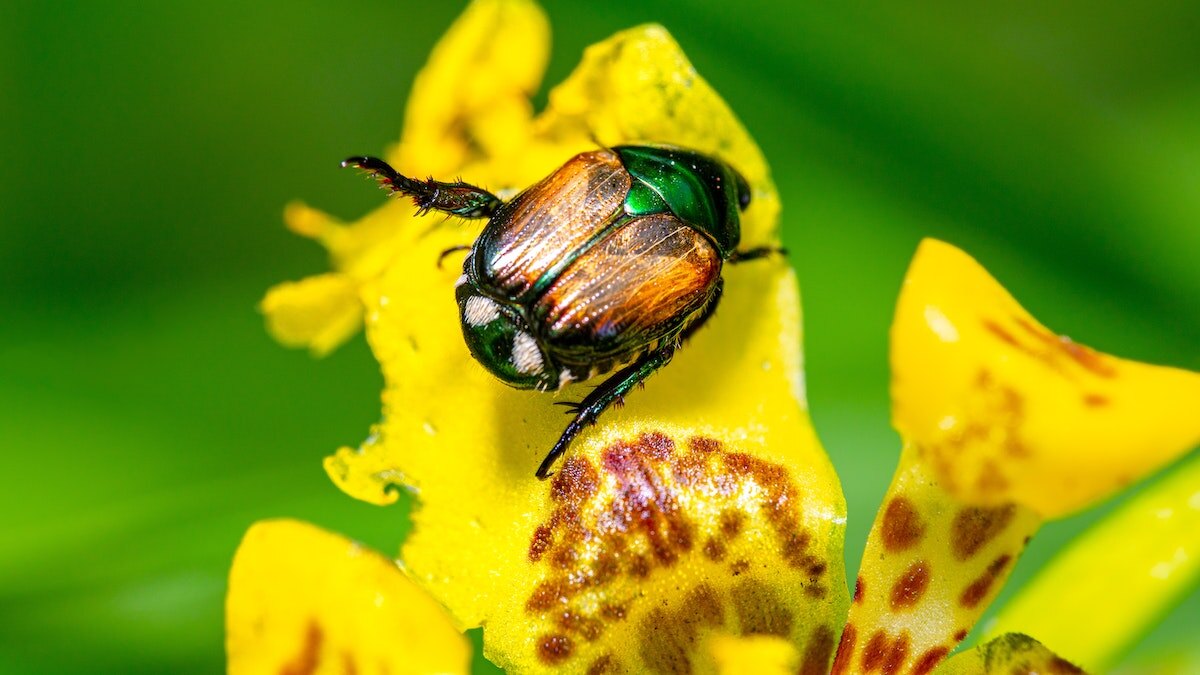
While there are many beneficial lawn and garden insects, there are a few that aren’t welcome at all. These pests wreak havoc on your turf, flowers, vegetables, and even trees, causing unsightly damage that can kill your plants. Here are a few of the common lawn and garden pests in Nebraska to watch out for:
1. White Grubs
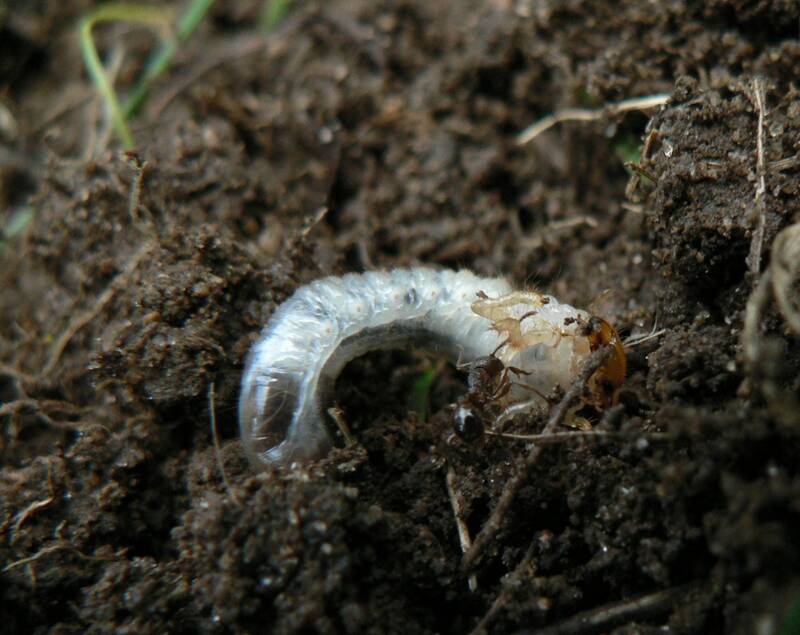
Scientific name: Several species in the Scarabaeidae family of beetles
Living in the soil, the white grub is actually a collective name for many scarab beetle larvae. Some home garden pests that start out as white grubs include the green June beetle and the notorious Japanese beetle. The native masked chafer also starts out life as a white grub, but it does very little damage and is difficult to eradicate.
White grubs often do their worst damage in the summer, munching on the root systems of Nebraska’s turfgrasses and ornamental plants. White grub damage can present itself as patches of dead grass. You might even be able to pull some of your sod back easily because it has no roots left to keep it planted in the soil. Later in the year, your lawn might suffer more damage from other animals digging in the soil to eat the juicy grubs.
The University of Nebraska–Lincoln (UNL) suggests applying a treatment of chlorantraniliprole or neonicotinoids to your lawn in June and July – no later than the 4th of July – if you want to prevent white grubs. If you want to get rid of white grubs that have already hatched, you can use the following treatments:
- Synthetic insecticides: Chlotianidin, trichlorfon
- Biological pest control options: Beneficial nematodes, B. thuringiensis ssp. Galleriae (Btg), milky spore disease
- Hand-picking, the least damaging option for your lawn. Drop the grubs in a bucket of soapy water afterward.
Finding a few white grubs is normal and shouldn’t be cause for alarm. Remember, some native beetles start out as white grubs too. However, you should definitely take action if they’re destroying your lawn.
2. Japanese Beetles
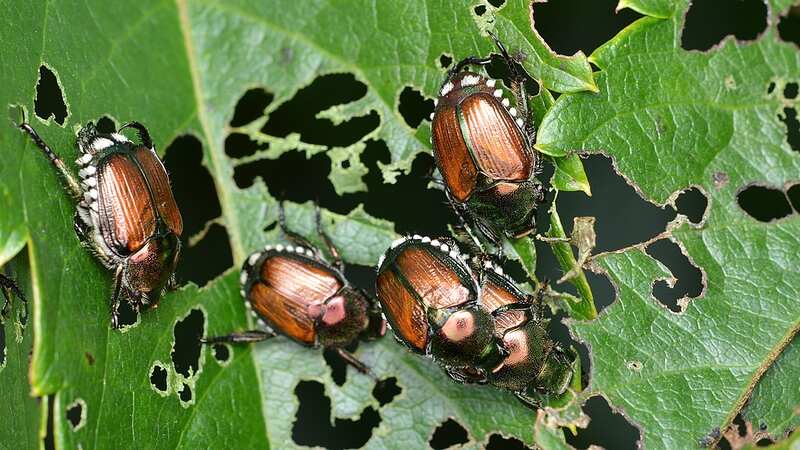
Scientific name: Popillia japonica
The Japanese beetle is an invasive and very destructive garden pest. These beetles are not just a nuisance when they’re in their larval stage as turf-munching white grubs. The adults also eat the leaves of over 300 species of plants, including soybean, sweet potato, rhubarb, rose, tomato, okra, grapes, and birch. Active from June to September, they’re drawn to damaged plants, starting a vicious cycle.
Japanese beetles are ½ inch long with bright green bodies and orange-ish copper top wings. Their grubs have hairy abdomens. Getting rid of the grubs doesn’t guarantee that you won’t see adult beetles later, as they can fly far. If you want to get rid of Japanese beetles, you can use the following solutions:
- Synthetic insecticides: Carbaryl, cyfluthrin, permethrin. Use in the evening after pollinators leave your garden.
- Organic pest control options: Neem oil, pyola insect spray, pyrethrins, Btg
- Like with white grubs, you can hand-pick and drop adult Japanese beetles into a bucket of soapy water.
If any of your trees are being preyed on by this garden pest, consider calling an arborist to deal with the problem. This is especially true if you have linden trees because some insecticides can’t be used on them.
3. Cutworms
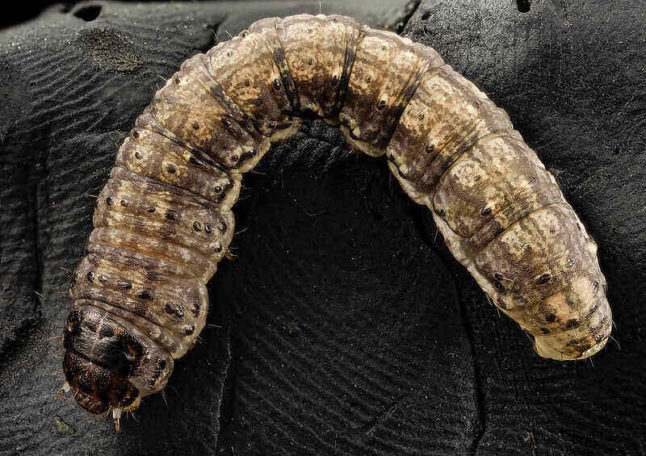
Species names: Peridroma saucia, Agrotis ipsilon, Nephelodes minians, Feltia jaculifera
Like white grubs, the term “cutworm” actually refers to the larvae of several species of moth in the family Noctuidae. Adult moths lay egg clusters everywhere, and they hatch into brown, black, greenish, or grayish caterpillars. The four species of cutworm that Nebraska homeowners have to worry about are:
- Variegated cutworm
- Black cutworm
- Bronzed cutworm
- Dingy cutworm
Cutworms get their name from their eating habits. Targeting stems, they can cut down young plants. They feed on cabbage, beans, carrots, corn, lettuce, tomatoes, potatoes, and turfgrasses. Aside from cut-down plants, cutworm damage also manifests as missing leaves and chewed-up buds and fruits. They love soft plant parts.
Keeping your yard clean as part of your fall lawn care routine helps to reign in cutworms. If you need to deal with cutworms in your garden, you have the following options:
- Organic pest control: Bacillus thuringiensis ssp. kurstaki (Btk) on small caterpillars (<¾ inch long), diatomaceous earth applied around plant stems
- Physical barriers, which prevent the caterpillars from eating your plants. These can include cardboard collars and floating row covers. Make sure to remove them when your plants start flowering so that they can be pollinated.
- Hand-picking cutworms also helps and is one of the least damaging pest control options.
4. Fall Armyworms
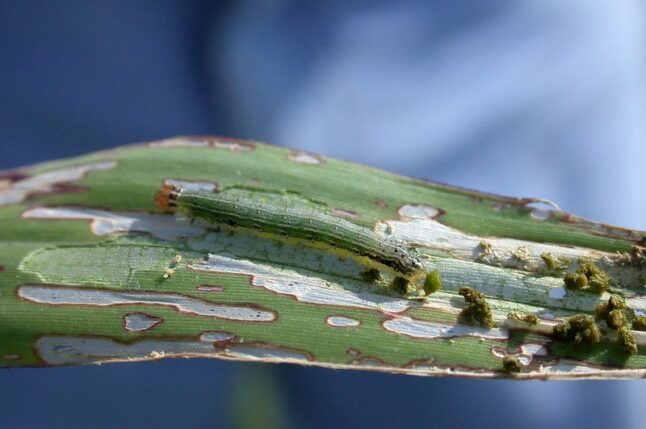
Species name: Spodoptera frugiperda
An uptick in storms in the Tree Planters’ State has created the perfect overwintering conditions for fall armyworms and the adult moths they turn into. These camo-colored caterpillars get their name from their feeding habits, as they munch through turf in large groups much like an army would. If the damage is too great, you’ll need to re-seed or re-sod your yard.
Patches of dead turf, sometimes appearing in a clear line dividing dead and healthy grass, is an indication of fall armyworm damage. You might even mistake this for drought damage, as it can look kind of similar. To check for these pesky lawn pests, you can perform the liquid soap test:
- Mix one tablespoon of liquid dish soap with one gallon of water
- Pour the solution near the damaged turfgrass
- Watch for fall armyworms, which will crawl to the surface
- Repeat if desired in the surrounding area
You can also look for the adult moths, which can be mottled brown or dark gray. Their wings are about 1 ½ to 2 inches long. You can also look for masses of eggs, which the moths lay anywhere they can find. The eggs are covered in dense scales that make them look fluffy.
There are a few ways to get rid of fall armyworms on your lawn. However, you can only deal with them when they’re small (less than ¾ inches long); once they mature and pupate, they can’t be eradicated. Here are your options:
- Synthetic pesticide: Pyrethroids such as bifenthrin, lambda-cyhalothrin, or carbaryl. Use in the evening after pollinators leave your garden.
- Organic pest control: Spinosad, Btk
- Destroying egg masses prevents them from hatching in the first place.
The good news is that fall armyworms can’t survive the harsh Nebraska winter. As a preventative measure, you can treat your lawn with chlorantraniliprole in the spring.
5. Aphids
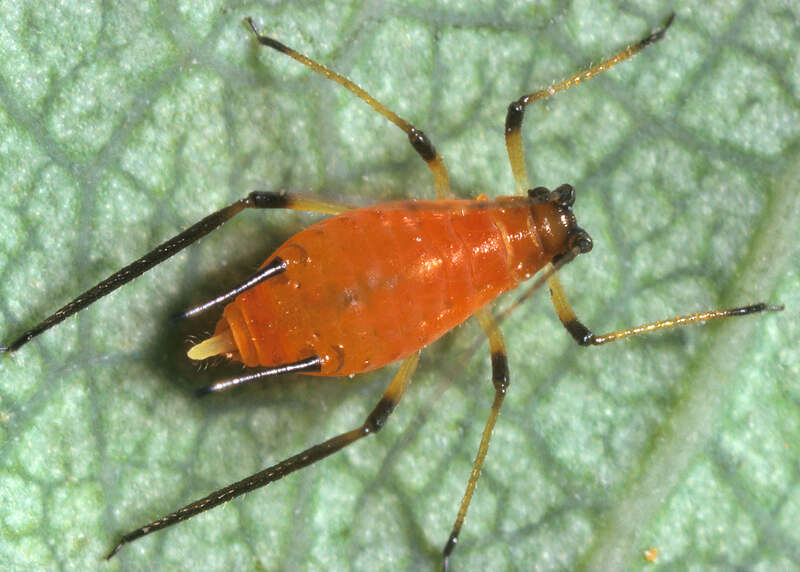
Species name: Several species in the Aphididae family of insects
These little green-yellow pests feed on many different garden plants; aphids target tomatoes, peppers, cabbage, broccoli, beets, potatoes, cucumbers, and squash, among others. They congregate on the underside of leaves and reproduce rapidly with or without partners.
Have you seen a lot of ants on your plants lately? That could actually be a sign of an aphid problem. Aphids produce a sticky and sweet liquid waste product called honeydew, which ants can use as food. Other signs of aphid damage include:
- White or yellow spots on leaves
- Leaf discoloration
- Sooty mold on leaves
These pests can quickly become a nuisance. Here are a few ways to get rid of aphids in your yard:
- Organic pest control options: Insecticidal soap, neem oil, horticultural oil. Don’t use these products when it’s above 85°F outside.
- Spraying with a high-pressure jet of water – like a hose – to dislodge them from the leaves.
- Pruning infested plant parts.
Some aphids aren’t green. The woolly aphids of the subfamily Eriosomatinae are fluffy, kind of like cotton or wool. If you see large cotton-like masses on your plants, those are probably woolly aphids at work.
6. Lace Bugs
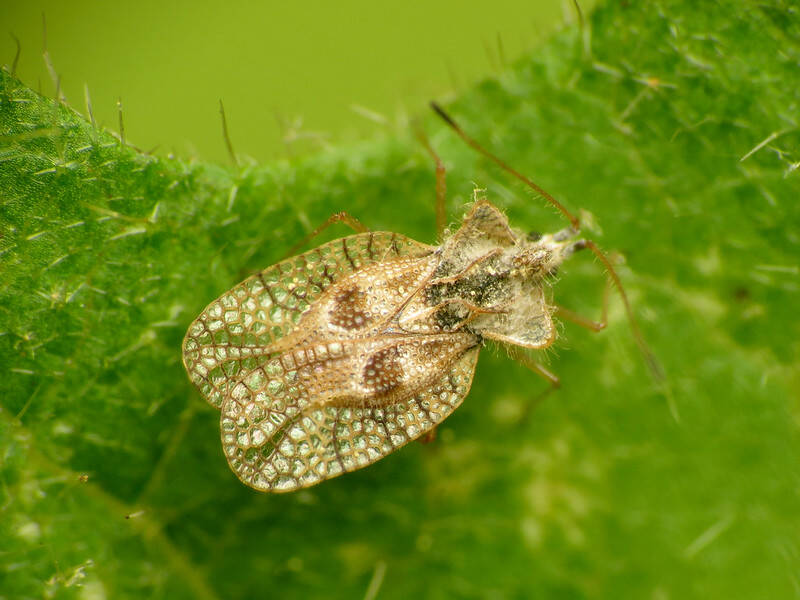
Species name: Several species in the Tingidae family of insects
Hiding on the underside of leaves, lace bugs eat the leaves of many plants. Their victims range from flowers like goldenrod, azalea, chrysanthemum, and aster to trees like oak and hackberry. These pesky pests have lace-like bodies that are about ⅛ of an inch long and lay small black eggs.
Lace bug damage manifests as yellow spotting, brown leaves, and leaf drop. In large enough numbers, they can even kill small plants. You might find them dropping on you if you stay under a tree, and they will probe your skin.
How do you get rid of these pests? You have a few options to control lace bugs:
- Synthetic pesticides: Carbaryl, pyrethroids. Use in the evening after pollinators leave your garden.
- Organic pest control: Insecticidal soap, horticultural oil, neem oil. Aim for the underside of leaves and don’t use when it’s hotter than 85°F outside.
- Spraying with a high-pressure jet of water – like a hose – to dislodge them from the leaves.
As a preventative measure, you can apply a systemic insecticide to your soil in the spring.
7. Two-Spotted Spider Mites
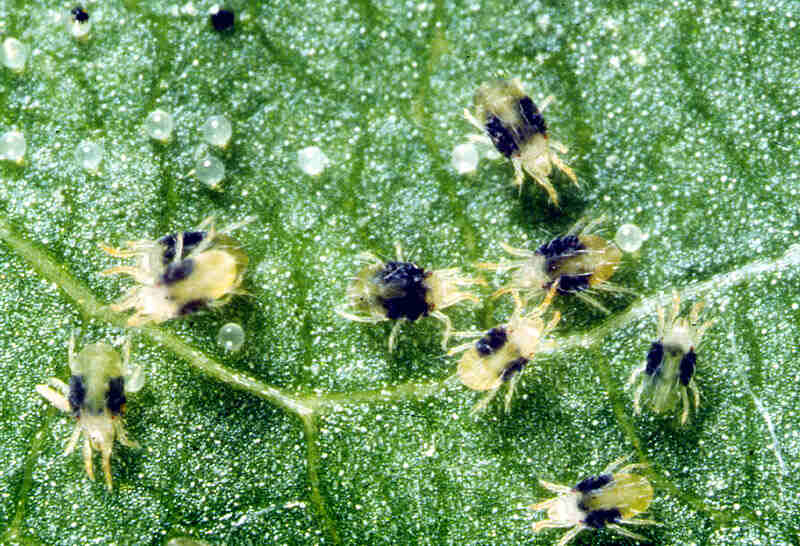
Species name: Tetranychus urticae
These pests aren’t insects; two-spotted spider mites are actually arachnids. Regardless of what you call them, they feed on the leaves of many types of plants. Trees, ornamentals, flowers, vegetables, fruit: They prey on them all in the hot and dry summer months. Spider mites are yellow and very, very small, growing only up to about 1/50th of an inch long.
What does spider mite damage look like? Your plants’ leaves could get tiny white or yellow spots and have silk strands. Spider mites can also cause leaves and flowers to distort, brown, drop, or even stunt their growth. The webs they create can kill your plants, too.
An ounce of prevention is better than a pound of cure. During drought conditions, make sure your plants are watered thoroughly to avoid stress. Keeping your yard clean during the winter should also help, as adult spider mites overwinter in garden debris. However, if you’re already dealing with a spider mite infestation, you have these pest control options available to you:
- Organic pesticides: Insecticidal soap and horticultural oil. Don’t use these products when it’s above 85°F outside.
- Spraying with a high-pressure jet of water – like a hose – to dislodge them from the leaves and destroy their webs.
You should check your plants for spider mites during drought conditions. Go around your garden every 3 to 5 days with a piece of white paper and shake your plants. Any spider mites that have made their home on your plants will fall to the paper, where you can easily see them.
FAQs About Common Lawn and Garden Pests in Nebraska
There are quite a few pests that you should know about that aren’t on this list. Here are some of them:
• Blister beetles, which attack vegetables and are quite toxic. Do not eat infested plants and always wear gloves when inspecting plants.
• Other beetles, like the three-lined potato beetle.
• Various tree pests, such as the emerald ash borer and bagworms.
• Sunflower moth, whose caterpillars attack composite flowers like sunflowers and coneflowers.
• Other caterpillars, like the cabbage looper and fall webworm
• Grasshoppers, which attack your turf
• Earwigs, a nocturnal pest that lives in moist hidey-holes in homes and gardens.
• Roseslug sawfly, which feeds on rose leaves.
And bugs aren’t the only pests you have to worry about. You should also keep an eye out for Nebraska’s noxious weeds in your lawn. These weeds are especially invasive and should be dealt with immediately if you find them on your property.
There are many insects out there that you should welcome in your Nebraska garden. These insects are either natural predators of pests or pollinators. Here are some beneficial insects that you might see around your lawn and garden:
• Butterflies
• Bees, including honeybees and bumblebees
• Lacewings, which feed on aphids and other pests
• Hoverflies
• Soldier bugs
• Praying mantises
Some organic pest control products, like oils, can damage your plants if applied amid hot temperatures. Don’t use them during high temperatures to prevent burning your plants.
Tell Pests to Buzz Off of Your Nebraska Lawn
While preventing pests from getting in your yard is better than dealing with them once they’ve set up shop, that’s not always possible. Many of these pests can fly once they mature. Don’t be afraid to call in a professional pest control service when your pest problems get too overwhelming.
Connect with a local lawn care specialist on LawnStarter today to help you with your pest problems, whether you’re in Omaha or anywhere else in Nebraska.
Main Image Credit: Pexels
